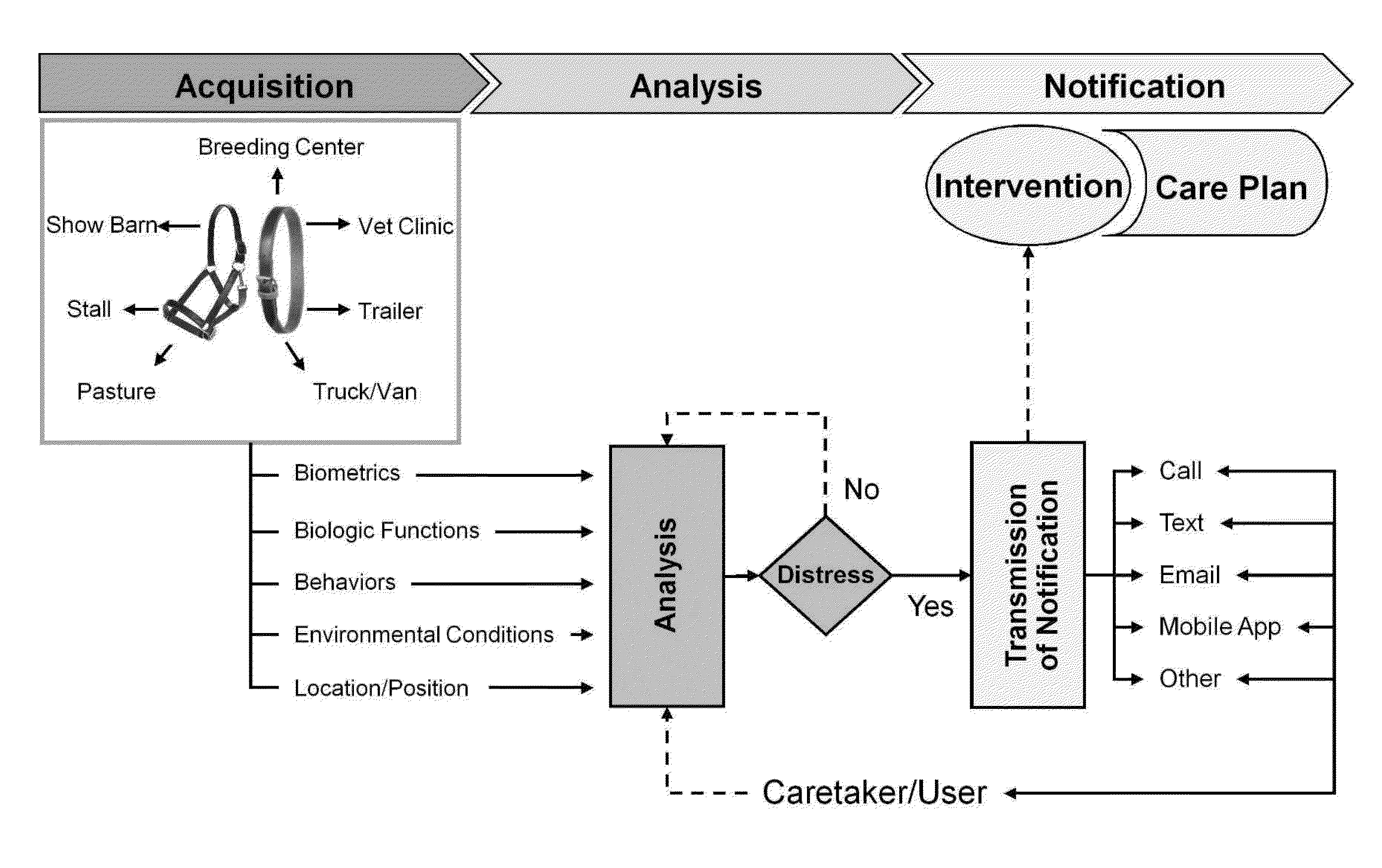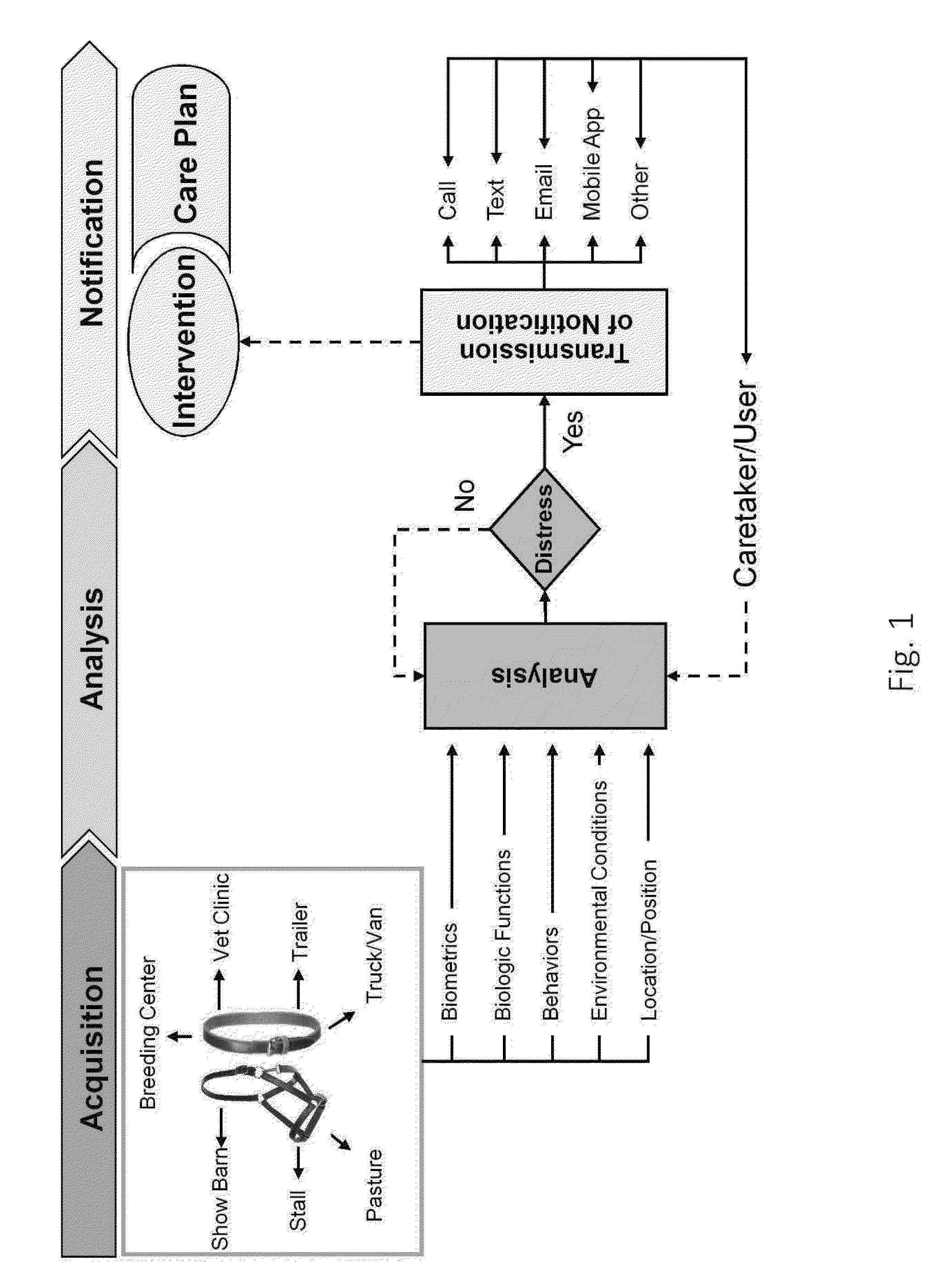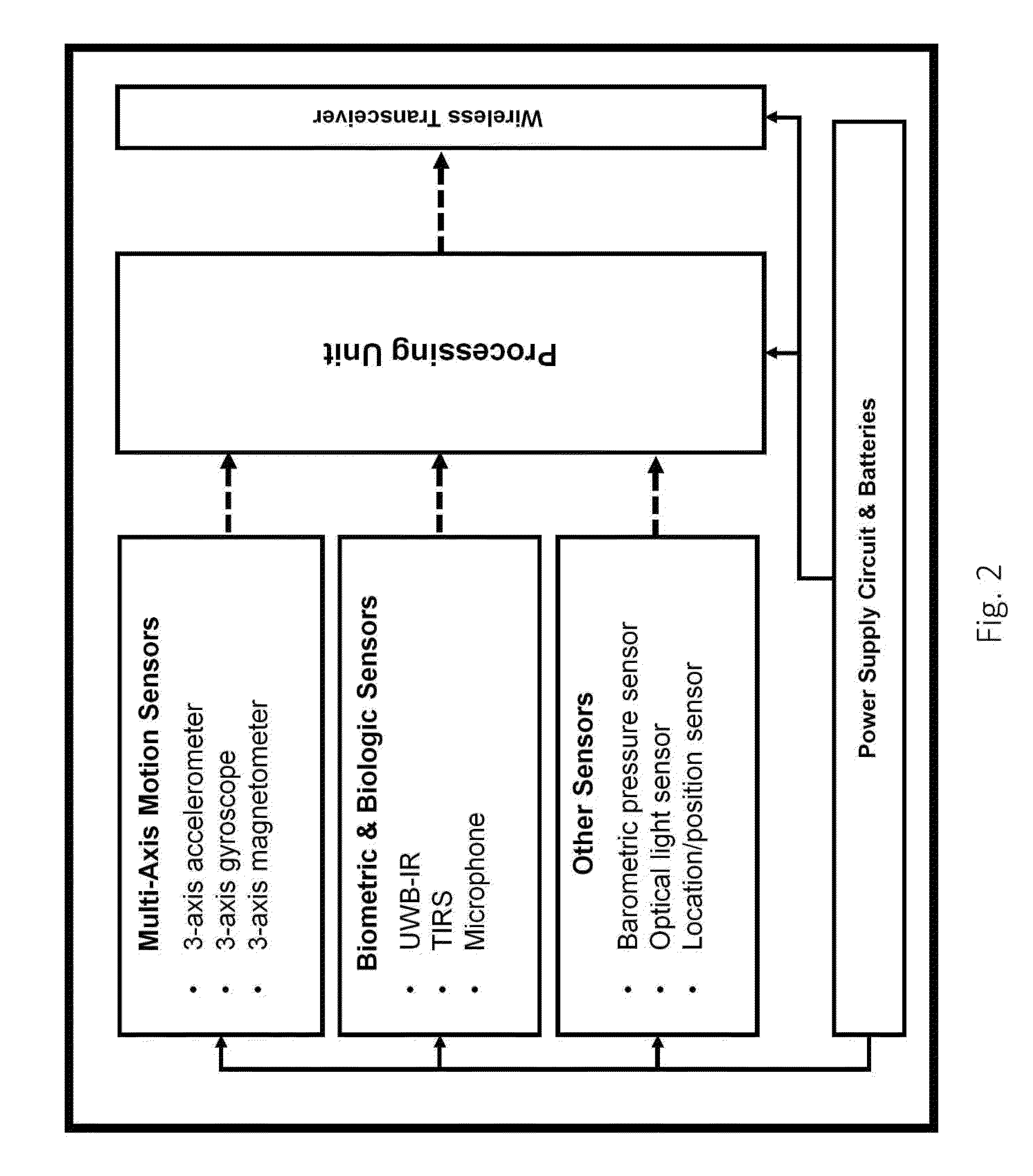Mobile animal surveillance and distress monitoring
a technology for monitoring and distress, applied in the field of detection of animal distress, can solve the problems of affecting the outcome of treatment, and causing serious problems such as permanent injury and even death, and affecting the treatment
- Summary
- Abstract
- Description
- Claims
- Application Information
AI Technical Summary
Benefits of technology
Problems solved by technology
Method used
Image
Examples
example / case study fuzzy
Example / Case Study Fuzzy Inference System
[0178]This section provides a case study of how the implementation of an individual FIS is achieved. For this case study, the biometric system inputs are used as they are best fit for fuzzy logic memberships and logistic terms. In this section, the use of fuzzifiers are explained, preliminary generation of membership functions / linguistic terms for the database are provided, an example rule base discussed, and a potential defuzzification method visualized.
[0179]Fuzzification of Biometric Input[0180]Each of the biometric inputs provides a crisp value for their estimate of a biometric reading. For the biometric inputs to be used in a fuzzy inference system, the crisp biometric value requires fuzzification. As discussed in the introduction, the most common fuzzifiers are singleton, Gaussian and triangular. A non-singleton fuzzifier is chosen since the reported biometric inputs have some uncertainty associated with their estimates. More specifical...
PUM
 Login to View More
Login to View More Abstract
Description
Claims
Application Information
 Login to View More
Login to View More - R&D
- Intellectual Property
- Life Sciences
- Materials
- Tech Scout
- Unparalleled Data Quality
- Higher Quality Content
- 60% Fewer Hallucinations
Browse by: Latest US Patents, China's latest patents, Technical Efficacy Thesaurus, Application Domain, Technology Topic, Popular Technical Reports.
© 2025 PatSnap. All rights reserved.Legal|Privacy policy|Modern Slavery Act Transparency Statement|Sitemap|About US| Contact US: help@patsnap.com



